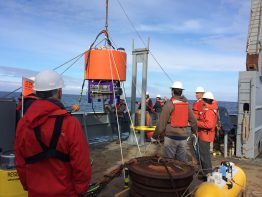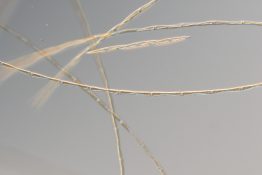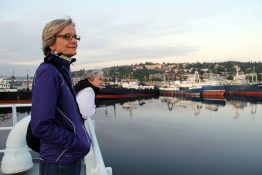A new NOAA-sponsored University of Washington project brings together academic, federal, state and tribal scientists to develop forecasts for toxic harmful algal blooms in the Pacific Northwest, like the massive bloom that closed Pacific Northwest beaches to shellfish harvesting in summer 2015. The National Oceanic and Atmospheric Administration in August awarded a five-year, $1.3 million grant to start working on the forecasts.
Read more at UW Today »Ocean conditions contributed to unprecedented 2015 toxic algal bloom
A study led by researchers at the University of Washington and the National Oceanic and Atmospheric Administration connects the unprecedented West Coast toxic algal bloom of 2015 that closed fisheries from southern California to northern British Columbia to the unusually warm ocean conditions — nicknamed “the blob” — in winter and spring of that year. “We have toxic algae events that result in shellfish closures off the Washington and Oregon coast every three to five years or so, but none of them have been as large as this one,” said lead author Ryan McCabe, a research scientist at the UW’s Joint Institute for the Study of the Atmosphere and Ocean, a collaborative center with NOAA.
Read more at UW Today »Welcome to the College’s newest faculty members (2016-2017)
Eight outstanding new faculty members with a wide range of experiences and expertise have recently started or will soon start at UW’s College of the Environment. The College community—its undergraduate and graduate students, faculty and staff—will benefit immensely from their contributions during the 2016-2017 academic year and beyond. The College’s impressive group of scientists and researchers now includes: Beth Gardner, assistant professor, School of Environmental and Forest Sciences Sunny Jardine, assistant professor, School of Marine and Environmental Affairs Van Kane, research assistant professor, School of Environmental and Forest Sciences Phil Levin, professor of practice, School of Environmental and Forest Sciences Alexis Licht, assistant professor, Earth and Space Sciences Jackie Padilla-Gamino, assistant professor, School of Aquatic and Fishery Sciences Luke Tornabene, assistant professor and curator of fishes, School of Aquatic and Fishery Sciences Chelsea Wood, assistant professor, School of Aquatic and Fishery Sciences Jodi Young, assistant professor, School of Oceanography/Future of Ice Welcome to all!
Read more »Dean's letter: Our science and passion fuel engagement
Inspired by Sarah Reichard's commitment to engagement, College of the Environment Dean Lisa J. Graumlich outlines her goals for the new academic year.
Read more »NSF award to launch citizen science initiative across Pacific Rim
What if every coastal community along the entire Pacific Rim were involved in monitoring their local marine environment, and all of that data were brought together in one place? Imagine, for example, if residents in Long Beach, Washington, could submit information about seabirds they observe, then look up bird data from another coastal community in southeast Alaska to compare notes. Think about the possibilities if new data were combined with traditional knowledge to bound climate impacts, or if local knowledge contributed to oceanography.
Read more at UW Today »





